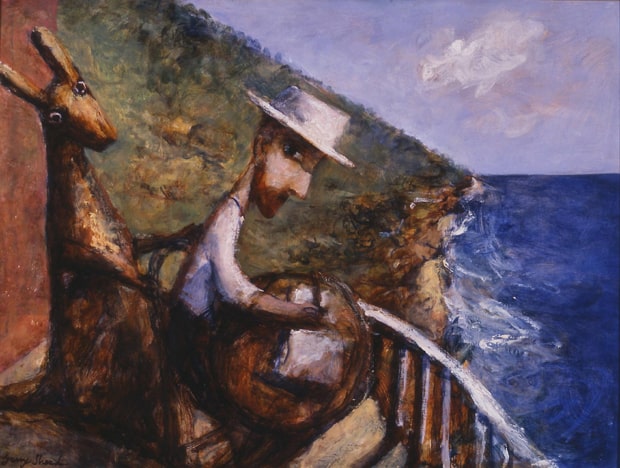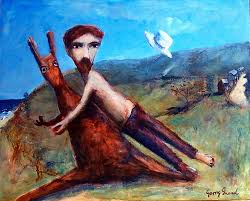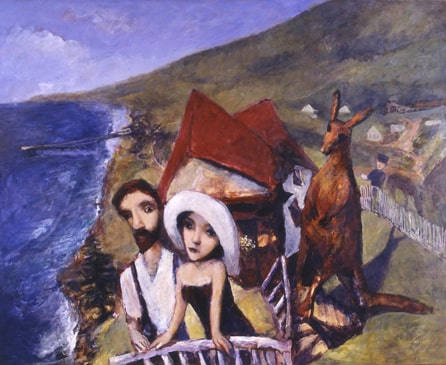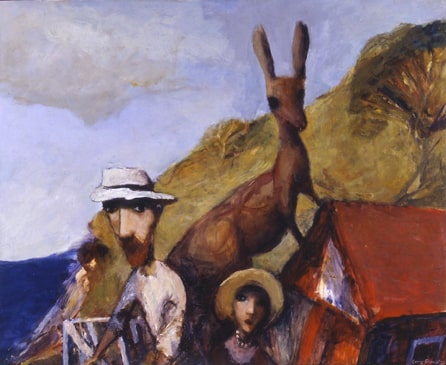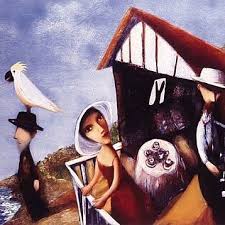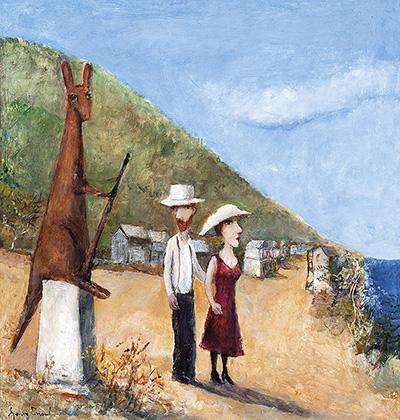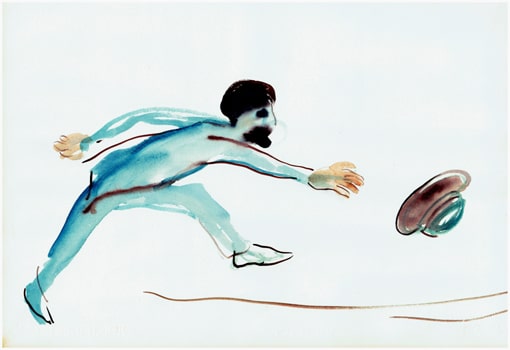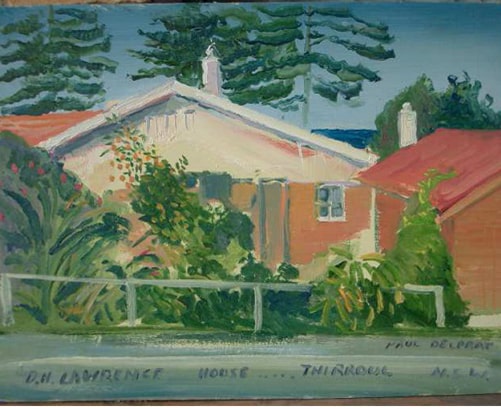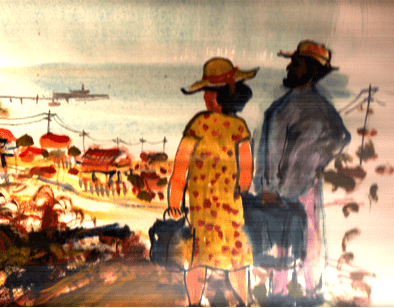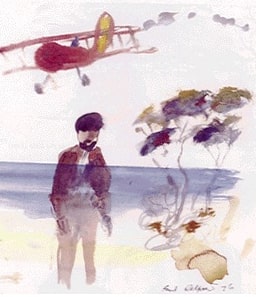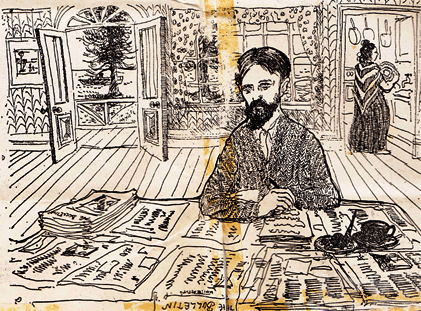D.H . Lawrence's 99 Days in Australia
ART, MUSIC & FILM
|
||||||||||||||||||||||||||
"Lawrence & Australian Art" from previous page
The luminaries in Australia's cultural pantheon who have been influence by Lawrence and Kangaroo cannot be fully plumbed here. Indeed, I cannot make up a definitive list. However, Tom Bass – Australia's greatest sculptor – must be mentioned. Bass, who died in 2010, called Lawrence "my inspiration, my mentor, my guide". It was Lawrence's poetry that first attracted him. "Lawrence spoke to me directly. I can't think of any other man who has been on my life's journey with me as intimately and constantly as Lawrence," he said in an interview published in Rananim in 2004. In 1974 one of Lawrence's poems "The Story of the Man Who Has Come Through" inspired Bass to cast a Lawrentian bronze, which he named "Introspection". "I was especially affected by that poem," he said. "It was particularly important to me at a time when it seemed that almost every aspect of my life and my values were crumbling. I felt that my whole sense of myself and my career had been invalidated. I felt like a medieval man stranded in the middle of the 20th century. "Then, when I read Lawrence's lines that there is ‘the fine, fine wind that finds its way through the chaos of the world' and that he would be ‘like a fine, an exquisite chisel, a wedge-blade inserted driven by invisible blows, the rock will split, and we shall come at the wonder' I felt he was speaking to me as a sculptor." Geoffrey Dutton – poet, author, publisher, and eminent all-round man-of-letters – was a fan of Lawrence from an early age, and even made a pilgrimage to the Villa Mirenda near Florence where Lawrence had written Lady Chatterley's Lover. In his autobiography Out in the Open, Dutton claimed to be the only person who had read the collected works of DH Lawrence while flying an aircraft. As a very young pilot in WWII, flying a Wackett Trainer, Dutton discovered that a book could be balanced on the cowl above the instruments, and propped again the windscreen. For John Douglas Pringle, a Scot who came to Australia in the 1950s and later became editor of the Sydney Morning Herald, Kangaroo was a "masterpiece". In his much-acclaimed 1958 book, Australian Accent,
|
Pringle devotes his second chapter to Kangaroo. Pringle was certain about Lawrence's importance to Australian life and literature. He praised .Lawrence's "faultless" observations in Kangaroo of the landscape and the bush: what Lawrence called "the spirit of the place" One of the few Australian artists to actually gain access to Wyewurk was Paul Delprat, who was also inspired by Lawrence and Kangaroo. He went down to Thirroul and Wyewurk several times, the first in 1976 (when he created a series of 20 pen-and-wash illustrations for one of Robert Darroch's articles about Lawrence and Kangaroo published in The Australian colour magazine). On a later visit Paul stationed himself in Craig Street, opposite Wyewurk, and was completing a sketch he had done of the street-side of the famous bungalow.
"An occupant from the house noticed me painting and took time to examine my work. I told him that I was an artist from Sydney, and that I was interested in DHL. He offered to let me view the interior of the house and the garden. I was invited to walk through to the front of the bungalow, down the steps, and across the lawn facing the sea, to the cliff edge. It was just as Lawrence had described it." Delprat's 1976 series depicted a number of scenes from Kangaroo, showing the Lawrence/Somers figure bathing in the sea, walking in the bush, watching a football match, and writing at the jarrah table which Paul saw with his own eyes – as had Whiteley and Shead two decades earlier – the day he was invited into Wyewurk. Paul summed up: "Having read much of his work, I believe I am able to say that I am ‘Lawrentian' in the sense that I have been affected, as have so many others, by his poetic vision, and by Kangaroo." What other literary text could have inspired so many significant Australian works-of-art, or had such an influence on Australian culture? |
|
||||||||||||||||||||||||
